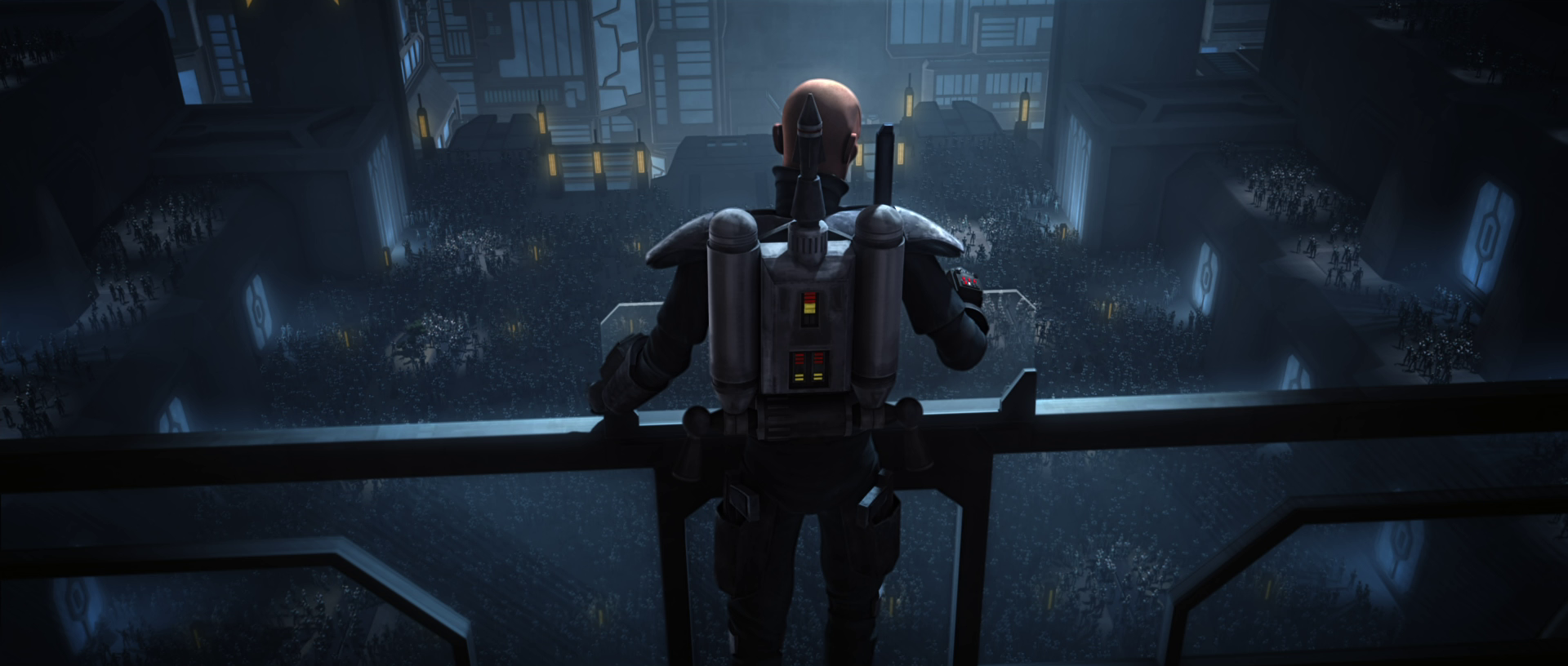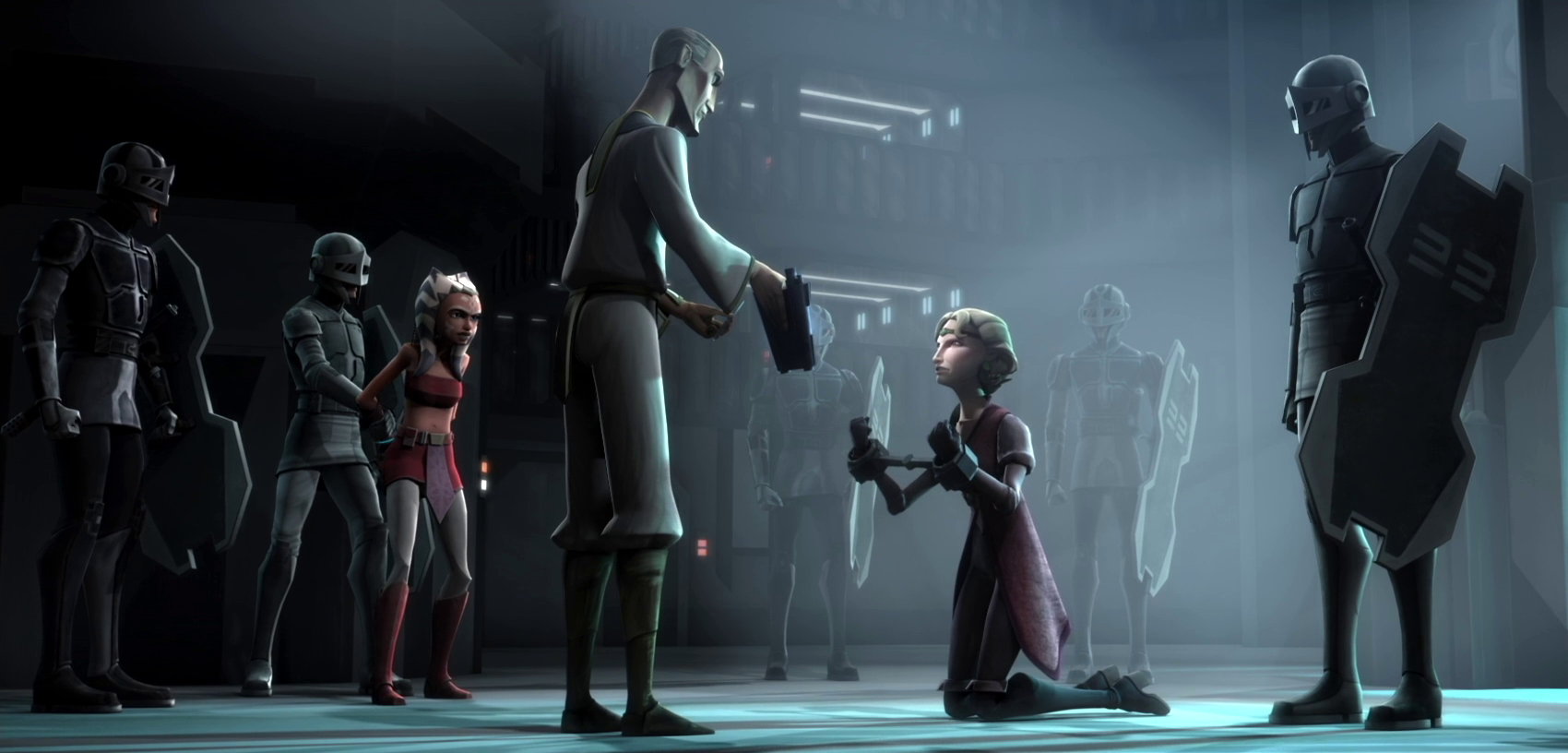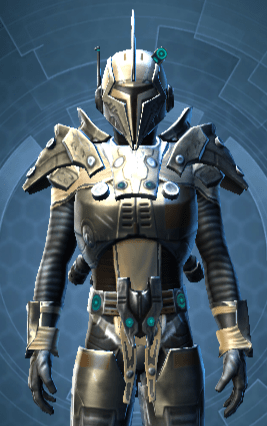

Strength +18, Dexterity +7, Constitution +8, Wisdom +15, The appearance of a Mandalorian's armor was largely up to the individual, as the highly independent Mandalorian people customized their armor with different colored paint schemes, clan and unit sigils, personalized glyphs, or other marking patterns in accordance to their own tastes. Mandalorian armor forged from beskar was highly prized for its incredible resilience, and while sets of armor were often passed down from one generation to the next, beskar armor was considered the most valuable. Numerous materials were employed in the creation of Mandalorian armor through the millennia, from alum and durasteel, to stygian-triprismatic polymer and the nearly indestructible beskar iron.


However, one of the armor's most lasting features was the T-shaped visor that adorned the helmet's face across its various incarnations. The specific design of Mandalorian armor evolved over time, gaining more sophisticated features over the years, including the incorporation of advanced helmet heads-up displays, and armor-mounted weapon systems such as flamethrowers and wrist rocket launchers. In an expansive community comprised of beings from numerous origins, the easily identifiable armor not only provided protection for the wearer, but a common visual identity for any and all Mandalorians, regardless of species or gender. The wearing of armor was one of the Resol'nare, the six tenets that defined the Mandalorian culture. Known as beskar'gam in the Mandalorian language of Mando'a-a name which meant "iron skin" when translated into Basic-Mandalorian armor was central to the Mandalorian way of life. The most recognizable symbol of the Mandalorian culture, Mandalorian armor was a catch-all term for the sets of distinctive full-body armor worn by Mandalorian warriors and soldiers throughout galactic history. As long as individuals spoke their mind and said what they meant, looked them straight in the eye, took off their boots when entering their home, paid their debts, never made a pass at a Mandalorian of the opposite sex unless they planned to become part of the culture, and respected the elderly-any Mandalorian who has reached such an age would be a renowned warrior-anyone who encountered a Mandalorian outside of combat was unlikely to come to harm. Mandalorians were also considerably more sociable than many would expect. Despite the wide array of professions Mandalorians took, every Mandalorian was combat trained and they could band together into an army on short notice. Others toiled in workshops and factories, working the land as farmers, or as doctors. While mercenary work and bounty hunting would be a primary means of income for the Mandalorians, several Mandalorians earned their living as weaponsmiths, or bodyguards. Many Mandalorian soldiers would become bounty hunters and mercenaries, selling their services to the highest bidder, many in the galaxy saw the Mandalorians as little else. In order to retain their heritage in the face of outside influence, Mandalorians placed a high value on rigorously carrying out the Resol'nare's tenets in a daily manner. The Resol'nare consisted of wearing armor, speaking the Mandalorian language, defending oneself along with one's family, contributing to the welfare of your clan, rallying to the Mand'alor when summoned, and raising one's children in the Mandalorian ways. These six tenets defined what it meant to be a Mandalorian, and any who wished to be considered as such was expected to abide by them. CultureĬentral to the Mandalorian culture were the Resol'nare, or the "Six Actions". The Mandalorian Protectors sided with the Alliance to Restore the Republic in about 3 ABY and continued to serve the New Republic. In later years, the Mandalorians moved away from their obsessively war-like and conqueror ways and instead, most became bounty hunters and mercenaries, selling their skills to various individuals and factions in the galaxy. However, they would not hesitate to cooperate with the Jedi if a partnership between the two groups was mutually beneficial. Throughout their history, the Mandalorians were frequently allied with the Sith, perhaps most notably the Sith Lord Exar Kun, and held a certain distrust and general dislike for the Jedi Order. The leader of the Mandalorians was known as the Mand'alor, translating to "Sole Ruler" and was rendered as "Mandalore" in Basic. In their early years, Mandalorian culture revolved around battle, with war being a source of honor and pride in their community. The Mandalorians-known in Mando'a as the Mando'ade, or "Children of Mandalore"-were a nomadic group of clan-based people consisting of members from multiple species and multiple genders, all bound by a common culture.


 0 kommentar(er)
0 kommentar(er)
